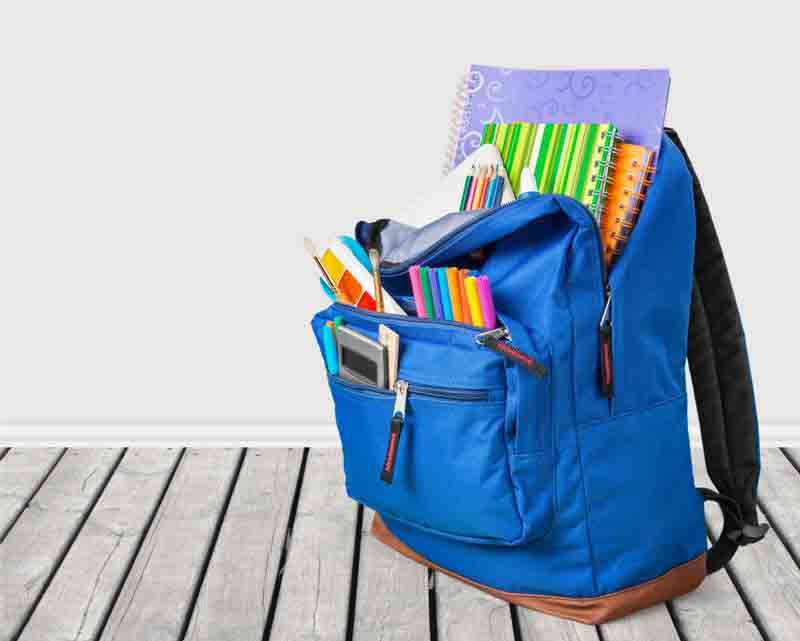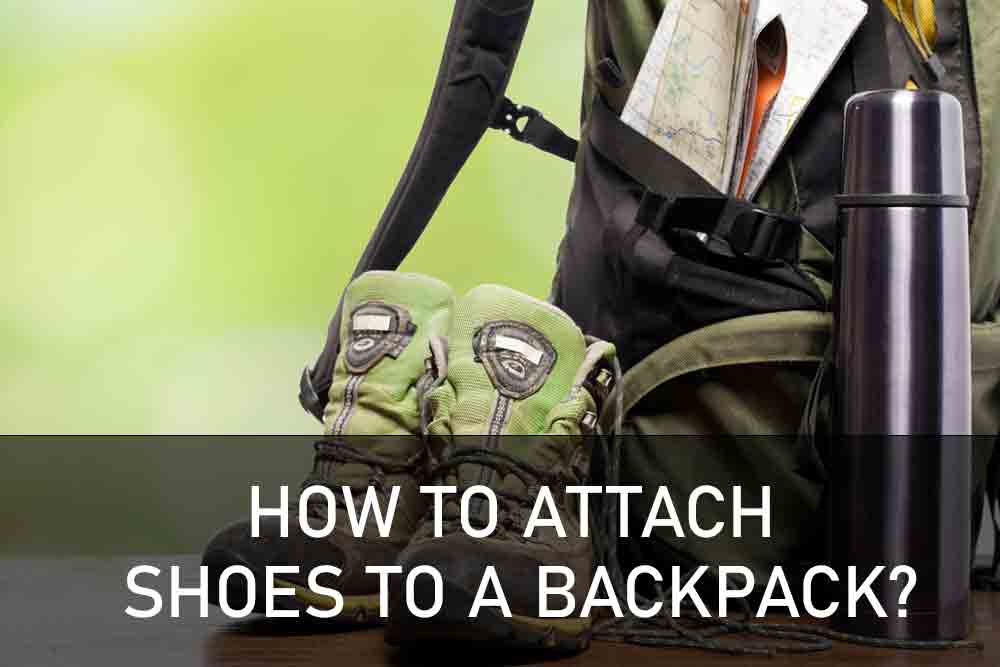There is no one “correct” way to put your backpack, as people’s body types and comfort levels vary widely. However, some general tips can help you to wear your backpack in a way that is both comfortable and safe.
When putting on a backpack, it is important to remember to distribute the weight evenly. This means that the weight of the pack should be distributed across both of your shoulders, and not just one. You should also make sure that the hip belt is tight enough so that the majority of the pack’s weight is transferred from your shoulders to your hips. This will help to prevent pain and injuries in your lower back and neck.
The Basics
Adjust a standard backpack so that the shoulder straps are even and at a comfortable height. Tighten each of the buckles on the hip belt so they fit snuggly around your waist, making sure that most of the pack’s weight is supported by your hips, not just your shoulders.
Make any final adjustments to the position of the shoulder straps, the height of your sternum strap, or the positioning of the hip belt.
Once you have evenly distributed the weight of your backpack around your entire back and hips, try swinging your arms in a few circles to make sure that there are no “tight spots” in the straps that could cause chafing or other problems while you are walking.
Now, take a few steps and make sure that your pack does not sway too much from the front or back. If it sways more than about eight inches in either direction, readjust the position of your straps until it is steady. Remember to keep the weight evenly distributed across both shoulders possible, but do not attempt to tighten up each shoulder strap so much that the pack is painful to carry.
Finally, tighten up all of your straps and make sure that they are not too loose or tight while you walk around for a while. If your backpack feels unstable or “wobbly” at any time while you’re walking, readjust the position of the shoulder straps or hip belt until it feels more secure.
Packing the Body of The Pack
The most important thing to remember when packing your pack is that you should “cinch” down the main body of the pack before you attach any front compartments. This will not only help to prevent gear from shifting around in your backpack but will also provide a more secure fit for the rest of your load.
For the best fit, take the main body of your pack and pass it through your legs. Then cinch up the shoulder straps until the weight is distributed evenly between your hips and shoulders while you are standing in an upright position. If you adjust this strap while sitting down or slouching, it will cause you to lean forward unwillingly.
When you have adjusted the main body of the pack, attach any front compartments that you might have. You should then adjust any other loose straps or gear before tightening up your hip belt and making sure that the weight is properly balanced.
Torso Straps
Many backpacks, including military-style rucksacks, have separate straps for the length of your torso. These are adjustable by sliding the buckle up or down on a nylon strap to get a snug fit. Make sure that the front part of your hip belt is tightened before adjusting these straps so that you can avoid putting too much pressure on your stomach and other sensitive internal organs.
Even if your backpack does not have a separate strap for the length of your torso, you should still make sure that the main part of your hip belt is secured before adjusting it so that your back and hips are properly supported. Each brand and style of the pack will be somewhat different, so read through any instructions provided to find out the best way to adjust the hip belt.
Compression Straps
Compression straps can help to support your backpack’s load and prevent it from shifting around while you are walking or climbing. It is important to note that compression straps should not be used as a replacement for a properly adjusted hip belt.
To attach compression straps, you should first loosen up all of your shoulder straps and hip belt. Next, attach the compression straps to any loops provided on the outside of your pack. Space them out by attaching each strap as far away from one another as possible.
Finally, tighten up your shoulder straps and hip belt to secure everything in place.
Hip Belt and Waist Strap
Your hip belt will provide the main support for your backpack. It should be worn low on your hips and relatively snug to maintain proper weight distribution. If it is too loose, you will feel as though all of your gear’s weight is being carried by your shoulders. If it is too tight, however, you may experience chafing or even damage to your stomach muscles.
The best way to adjust the tightness of your hip belt is to begin by loosening up all of your shoulder straps and compression straps. Then, try tightening the hip belt until it feels snug against your hips but is not uncomfortably tight. Once you have gotten a good fit, tighten up any remaining shoulder straps.
Chest Straps
Many backpacks have optional chest straps, which are designed to help maintain balance and distribute weight more evenly. You should consider getting a pack with this feature if you intend on doing any long-distance hiking or carrying heavy loads over uneven terrain.
To attach the strap, simply pass it between your shoulder blades before tightening it up. You should not attach the strap too tightly, but you should make sure that it feels comfortable and secure before tightening up any other straps on your backpack.
Shoulder Straps
Your backpack’s shoulder straps should be long enough to comfortably reach your biceps and padded to cushion any pressure points. They should also be adjustable by sliding the buckle up and down on a nylon strap.
A general rule of thumb for adjusting your shoulder straps is that they should rest lightly against your collarbone, but not push into it. You should find a comfortable fit by adjusting the length of the straps and sliding the buckle up and down.
Weight Distribution
It is best to distribute the weight in your backpack as evenly as possible between your hips and shoulders to avoid injury when carrying heavy loads.
Caring for A Backpack
If you wear a backpack fairly often, there are several things that you can do to ensure that it is in good condition.
First, always keep your backpack’s weight distributed reasonably evenly. If it starts to lean one way or another, try shifting some of its contents around inside to balance out the load.
Second, if your pack starts feeling loose at any point during your hike, tighten up any straps that might be providing a weak point.
Finally, you should try washing your backpack with a solution of mild soap and water from time to time to remove any dirt or sweat that has built up on the attached padding. If there is any wear-and-tear taking place on your backpack’s exterior, consider using a leather cleaner and conditioner to keep it in good condition.
If you follow these easy steps, your backpack will provide a comfortable fit and years of reliable performance.
Don’ts
- Do not wear your backpack with one shoulder strap much lower than the other. This will cause a bad angle for your spine, as well as pressure that can build up over time and potentially cause injury to your neck or back.
- Do not crank down on the straps of your pack too tightly. This can cause discomfort, problems with your circulation, and make it harder to breathe.
- Do not wear a pack that is too large or heavy for you. If it looks like the backpack could slip off without too much wiggling around, it’s probably too big for you. Likewise, if you feel unable to stand up straight because of the weight on your shoulders, you are probably wearing a pack that is too heavy.
- Do not wear clothes with big pockets when wearing a backpack. This can cause the pockets to get caught in the straps of your backpack while you walk, which will lead to irritations or even injuries if it becomes severe enough.
- Do not wear your pack constantly with the hip belt unbuckled, as this can cause problems with your hips and lower back. This is especially important if you have a pack that has a very rigid stiff hip belt designed to help transfer some of the weight from your shoulders to your hips.
Conclusion
As long as you keep these things in mind when putting your pack on, you should be able to avoid any unpleasant or harmful chafing that can be caused by poorly fitted straps. If you are having trouble getting the proper fit, ask a friend to check over your gear for you or contact the manufacturer of your backpack for more specific instructions. When it comes to comfort and ease of use, the right backpack is usually worth the extra effort.








